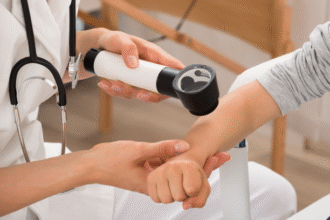Rubella: Treatment and Prevention
Rubella is usually a mild illness in children and adults, but infection during early pregnancy can cause congenital rubella syndrome (CRS). There is no specific antiviral therapy; care focuses on symptom relief, isolation to prevent spread, and vaccination to prevent future cases.
Quick Takeaways
- Most cases need only supportive care at home; avoid aspirin in children/teens due to Reye syndrome.
- Isolate until 7 days after rash onset; infants with CRS can shed virus for months and require extended precautions.
- Vaccination (MMR) prevents rubella and CRS; it’s contraindicated in pregnancy but should be given postpartum if non‑immune.
Home Care and Symptom Relief
- Rest and fluids; light, easily digestible meals.
- Antipyretics/analgesics: acetaminophen or ibuprofen as appropriate for age and health status.
- Comfort measures: cool compresses for fever, saline nasal spray or humidified air for congestion, oral care if mucosa is irritated.
- Avoid aspirin in children/adolescents because of the risk of Reye syndrome.
When to Seek Medical Care (Red Flags)
- Persistent high fever, severe headache, neck stiffness, confusion, seizures.
- Chest pain, shortness of breath, palpitations (possible myocarditis).
- Signs of bleeding/bruising (possible thrombocytopenia) or dehydration.
- Pregnancy or suspected pregnancy with exposure or symptoms — seek care urgently.
Special Considerations in Pregnancy
- MMR vaccine is contraindicated during pregnancy. Check rubella IgG to assess immunity after exposure.
- Non‑immune pregnant individuals with exposure require urgent obstetric and public‑health consultation. Immune globulin has uncertain benefit for preventing CRS and is not routinely recommended; individualized decisions may be made in select cases.
- Postpartum: vaccinate non‑immune persons before discharge and counsel to avoid pregnancy for a period after vaccination per local guidance.
Isolation and Infection Control
- Stay home and avoid close contact with others until 7 full days after rash onset.
- Use droplet precautions in clinical settings; notify healthcare facilities in advance if evaluation is needed.
- CRS infants: coordinate with public health for prolonged precautions due to extended viral shedding.
Prevention — Vaccination
- Vaccine: MMR (measles‑mumps‑rubella) provides reliable protection.
- Typical schedule: first dose at 12–15 months; second dose at 4–6 years. Follow local schedules, including catch‑up for unvaccinated children and adults.
- Ensure documented immunity for healthcare workers, students, and travelers.
After Exposure (PEP)
- MMR is not used as PEP in pregnancy and is contraindicated during pregnancy.
- Routine immune globulin to prevent rubella/CRS is not reliable; may be considered case‑by‑case for exposed, non‑immune pregnant people who choose to continue pregnancy — consult specialists and public health.
What Not to Do
- Antibiotics don’t treat rubella (a viral illness).
- No role for corticosteroids or antivirals in uncomplicated rubella.
Educational information only; follow local public health guidance and consult clinicians for individualized care.







